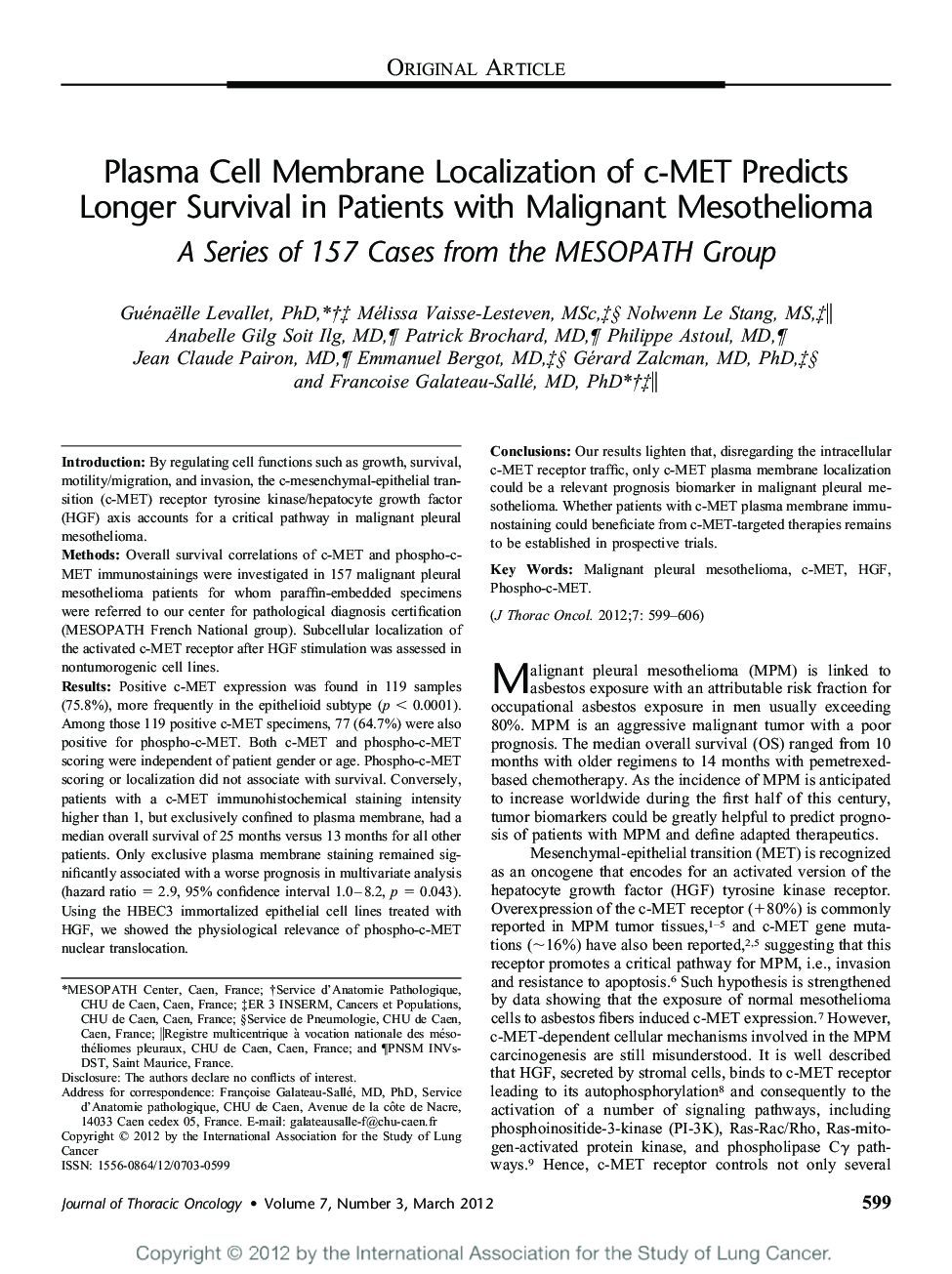| Article ID | Journal | Published Year | Pages | File Type |
|---|---|---|---|---|
| 3990709 | Journal of Thoracic Oncology | 2012 | 8 Pages |
IntroductionBy regulating cell functions such as growth, survival, motility/migration, and invasion, the c-mesenchymal-epithelial transition (c-MET) receptor tyrosine kinase/hepatocyte growth factor (HGF) axis accounts for a critical pathway in malignant pleural mesothelioma.MethodsOverall survival correlations of c-MET and phospho-c-MET immunostainings were investigated in 157 malignant pleural mesothelioma patients for whom paraffin-embedded specimens were referred to our center for pathological diagnosis certification (MESOPATH French National group). Subcellular localization of the activated c-MET receptor after HGF stimulation was assessed in nontumorogenic cell lines.ResultsPositive c-MET expression was found in 119 samples (75.8%), more frequently in the epithelioid subtype (p < 0.0001). Among those 119 positive c-MET specimens, 77 (64.7%) were also positive for phospho-c-MET. Both c-MET and phospho-c-MET scoring were independent of patient gender or age. Phospho-c-MET scoring or localization did not associate with survival. Conversely, patients with a c-MET immunohistochemical staining intensity higher than 1, but exclusively confined to plasma membrane, had a median overall survival of 25 months versus 13 months for all other patients. Only exclusive plasma membrane staining remained significantly associated with a worse prognosis in multivariate analysis (hazard ratio = 2.9, 95% confidence interval 1.0–8.2, p = 0.043). Using the HBEC3 immortalized epithelial cell lines treated with HGF, we showed the physiological relevance of phospho-c-MET nuclear translocation.ConclusionsOur results lighten that, disregarding the intracellular c-MET receptor traffic, only c-MET plasma membrane localization could be a relevant prognosis biomarker in malignant pleural mesothelioma. Whether patients with c-MET plasma membrane immunostaining could beneficiate from c-MET-targeted therapies remains to be established in prospective trials.
